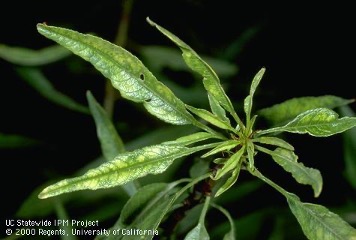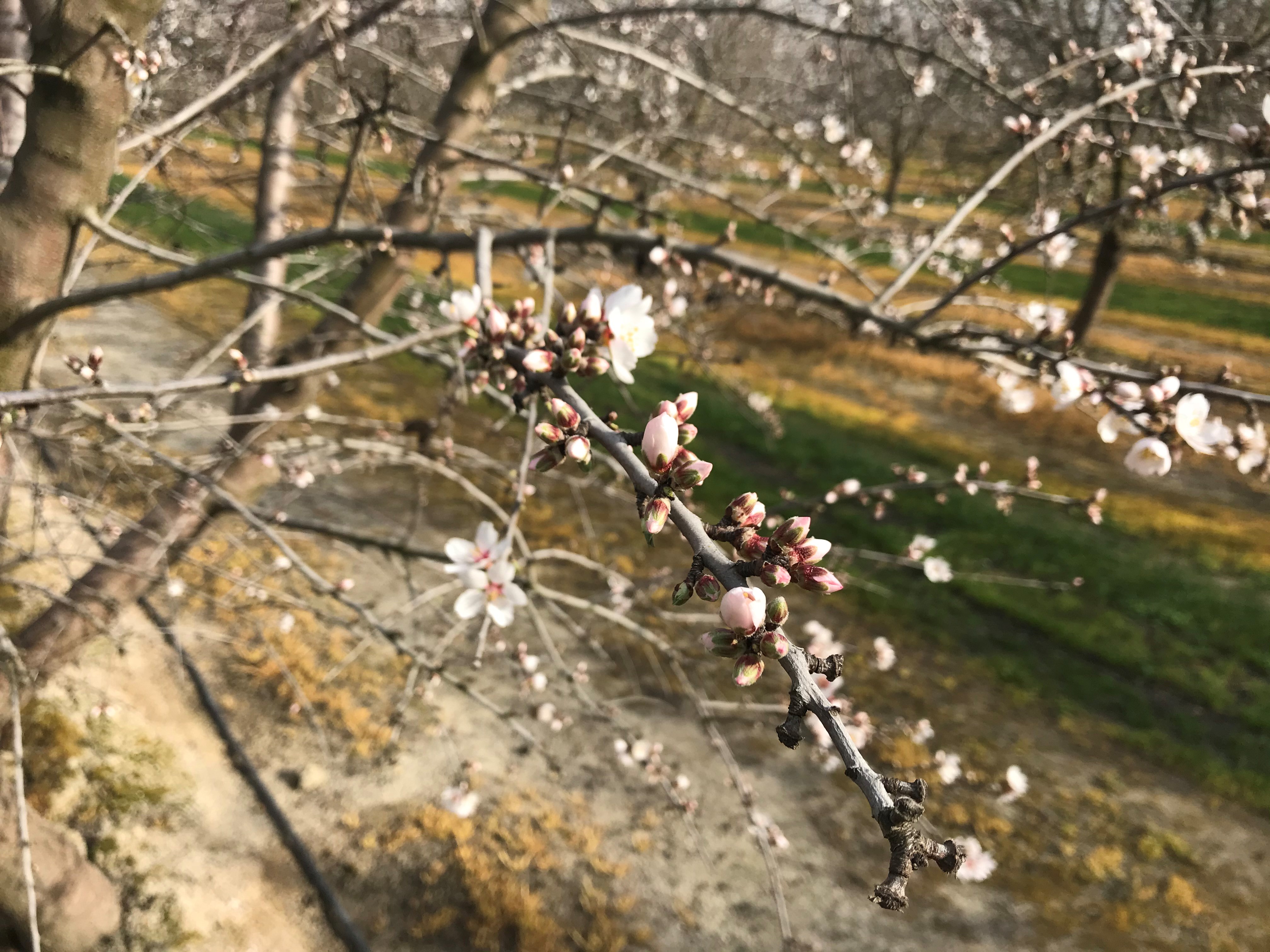Pre-bloom Application of Zinc and Boron on Almonds
January 20, 2021
Agronomics / Background
Zinc is essential to many processes such as cell division, protein synthesis and auxin synthesis in growing points (flowers and shoots), and bloom is the time of the most growing points in a tree. Boron is essential for cell wall synthesis and division. Boron fertilization improves fruit or nut set compared to deficient plants in many crops, but only if applied in time to get B into swelling flower buds prior to bloom. Both Zn and B can be absorbed into leaves and translocated within almond trees.
Conditions Leading to Zinc and Boron Deficiencies
Zinc deficiencies are common in almond plantings all over the Central Valley of California. Most often it is associated with high soil pH levels which inhibit uptake. High soil phosphate levels have also been shown to induce zinc deficiencies. Cool, wet soils that are often present during almond bloom also make zinc uptake difficult, so foliar application is ideal to bypass these types of transient deficiencies.
Boron will leach out of the rooting zone in sandy soils and high levels of calcium will decrease plant-available boron in the soil.
Desired Zinc and Boron Tissue Test Values
In determining the need to include zinc in a prebloom spray, it is worth considering where your orchard’s tissue levels were at last season during the summer. Trees showing summer leaf levels of 15 ppm Zn or less are considered deficient. However, anything less than 25 ppm is likely to benefit from an early season foliar Zn spray.
For boron, running a hull analysis at harvest may be the best approach. Hull B content of less than 80 ppm is considered deficient. However, if your hull B levels were anywhere below 120 ppm, a pre-bloom spray is likely to improve nut set this season. Certain areas, especially those with high B levels in the irrigation water, may have concerns with boron toxicity. Hull boron levels above 300 ppm may lead to excessive gumming from pruning wounds, spurs, and leaf scars, as well as more “stick tight” nuts.
Key Application Timings and Rates
Both zinc and boron play critical rolls in pollination and nut set so prebloom period is an ideal time for foliar application to increase yields. Applications from pink bud stage to 10% bloom will be very effective.
Pre-bloom or on spring foliage, Manni-Plex Zn applied at a rate of 1-2 quarts/acre and Smart B at a rate of 1 pint/acre are very safe and effective at supplying zinc and boron. These products will also tank mix well with any bloom-time fungicides that may be in the tank.


